How We Tried to Mine Amber
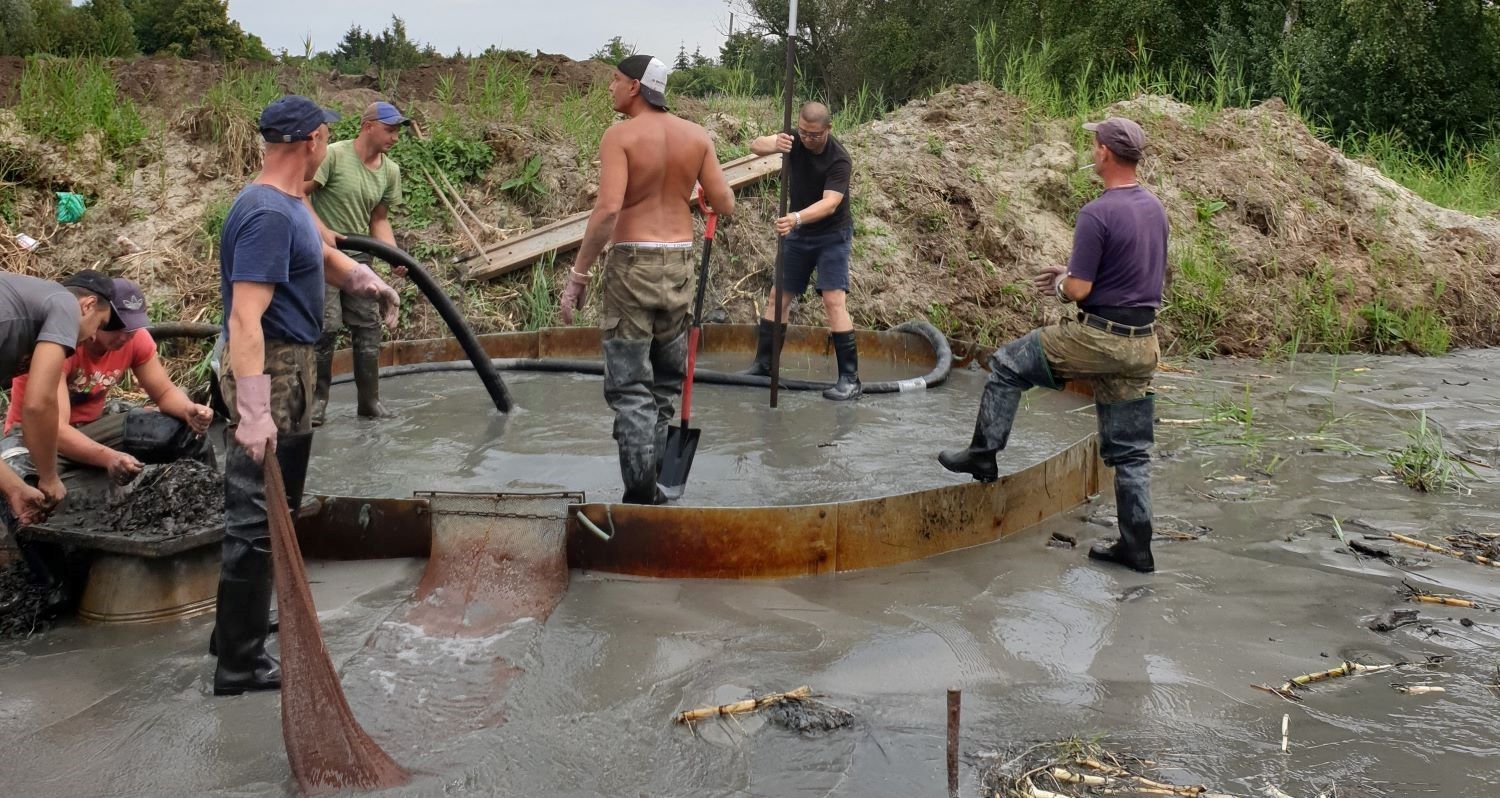
We always wanted to find a nice piece of amber on the seashore. Every time we go to the Baltic, we stay as close to the beaches as possible so that we can go straight to the sea in case of a storm. You might think that only a fool looks forward to a storm by the sea, but anyone who wants to find amber on the beach has to endure the discomfort of stormy weather. One morning we were awakened by thunder and lightning. It was a nice storm, so we already knew it is a great opportunity. We must get out as quickly as possible! Even me, for whom getting up early in the morning is the worst punishment, got dressed in a flash. When the storm had died down a bit, we ran to the beach and embarked on a little adventure. We dug through washed up twigs, shells, rocks and sand. But nothing... Except for one tiny amber grain, we found nothing. The storm wasn't strong enough, and there were already a few searchers on the beach ahead of us. At least we got to enjoy the sunrise.
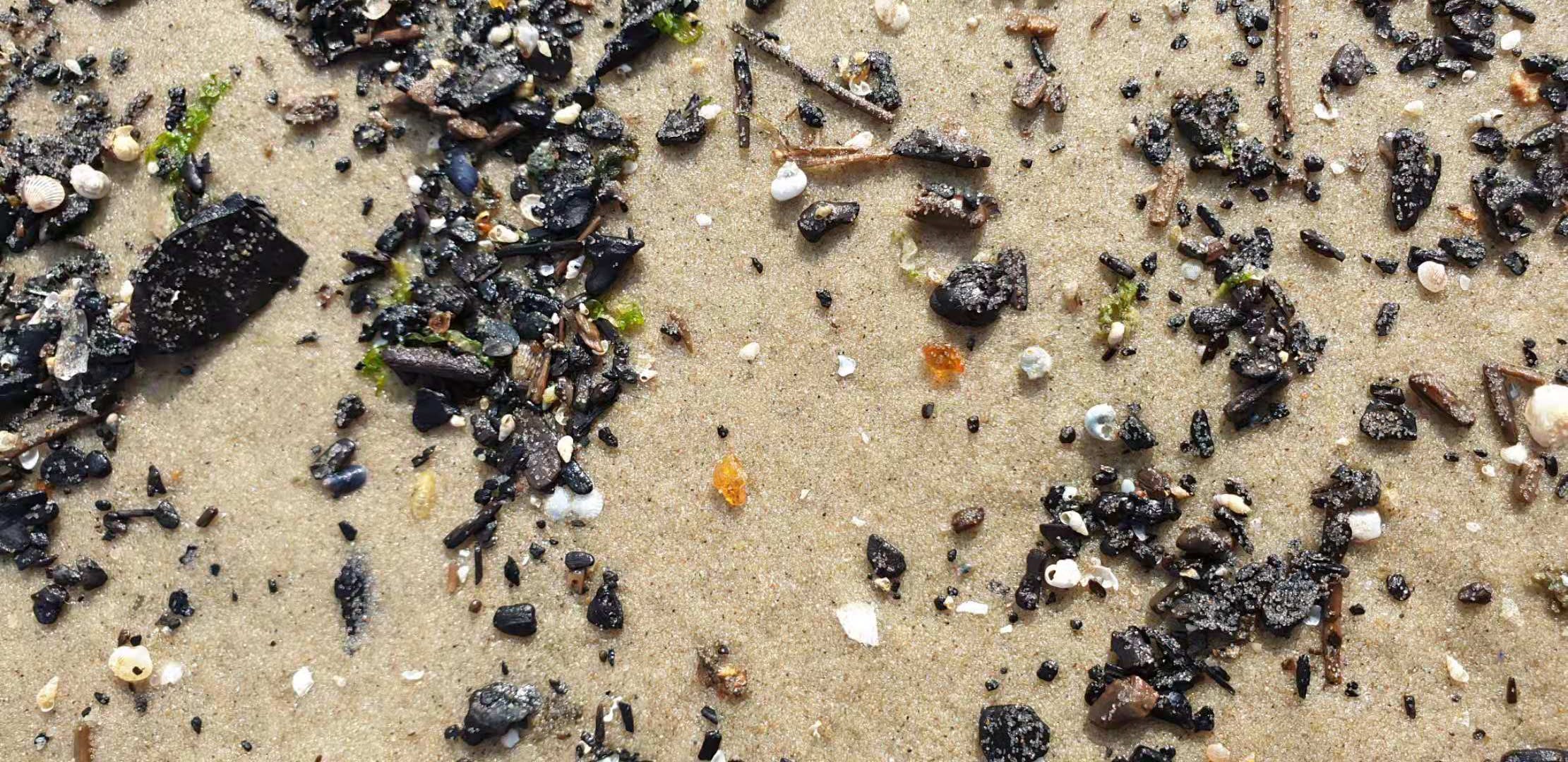
Photo: These tiny bits of amber really do look like little teardrops washed up by the sea.
Later, a friend who lives in Gdansk and lives near the sea explained to us that now the sea does not wash up so much amber. And if it does, it's just small grains. Larger pebbles either get caught in fishing nets or the sea washes them out only during really strong storms, the ones of a kind that break the trees. That's when the branches and seaweed in which the larger amber stones are trapped are washed out of the sea. But storms that strong tend to happen in late autumn or winter only. That's when the locals come out with torches and buckets. Regardless of the bitter nor'easter and frost, everyone is searching. Nowadays, when the price of raw amber is high, tens to hundreds of people are on the seashore after such a storm. Of course, everyone is trying to hunt for some amber stones, but they are getting scarce and the searchers are getting more and more numerous...
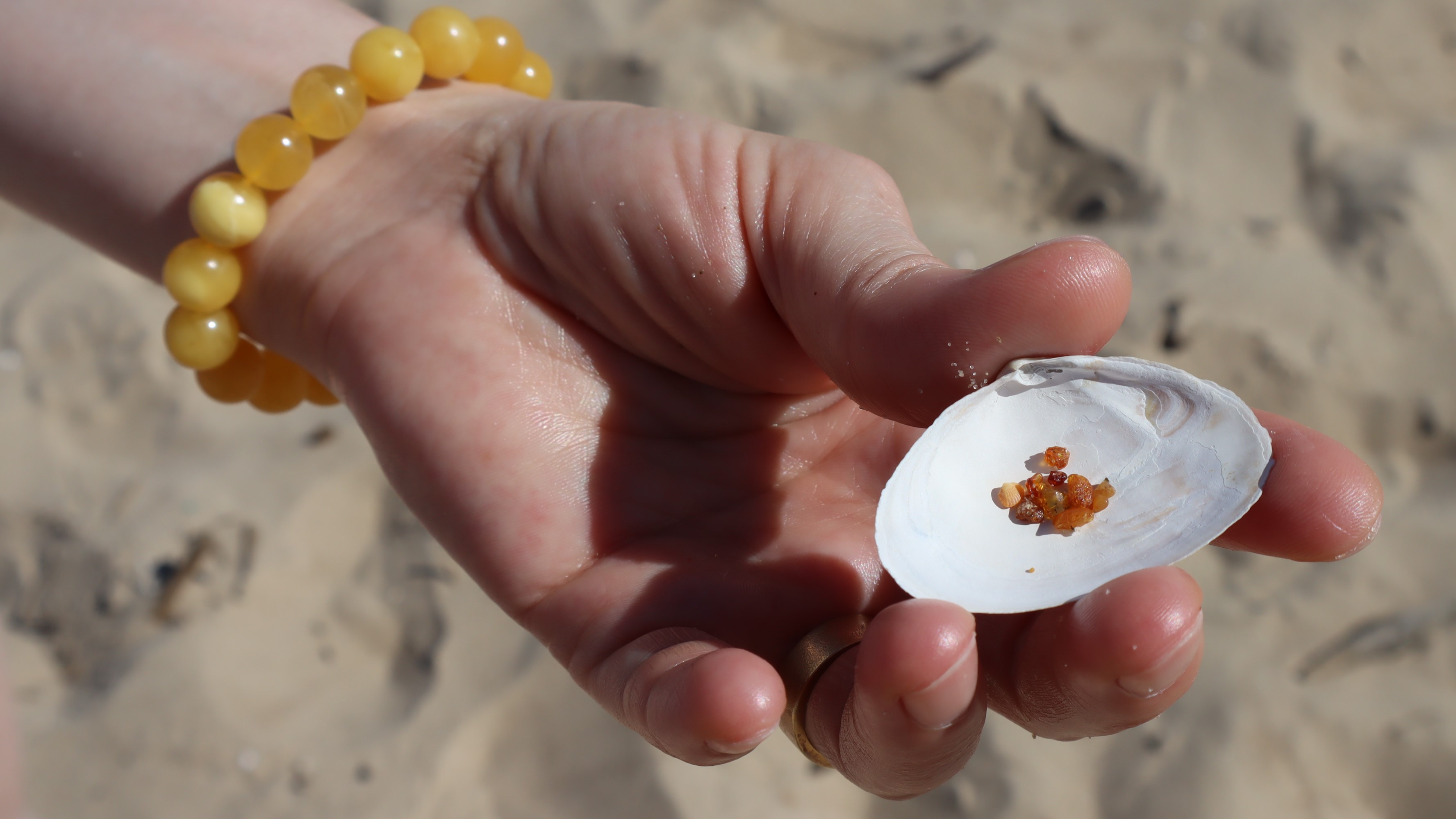
Photo: This is probably the biggest catch we managed to collect at ones
Today, amber from the sea is becoming more of a rarity. If you have a different experience, please, tell us where to find the best seashores for amber hunting.
Most of the raw amber sold on the market is mined from the ground. So, if we couldn't get it from the sea, we were lucky to get it on land. A friend of ours has a licence to amber mining. For a long time he walked around a field which he knew was a rich deposit, because he used to mine in its vicinity before. Finally, after two years of dealing with all sorts of permits, he was able to get to work and we could experience how amber is really mined.
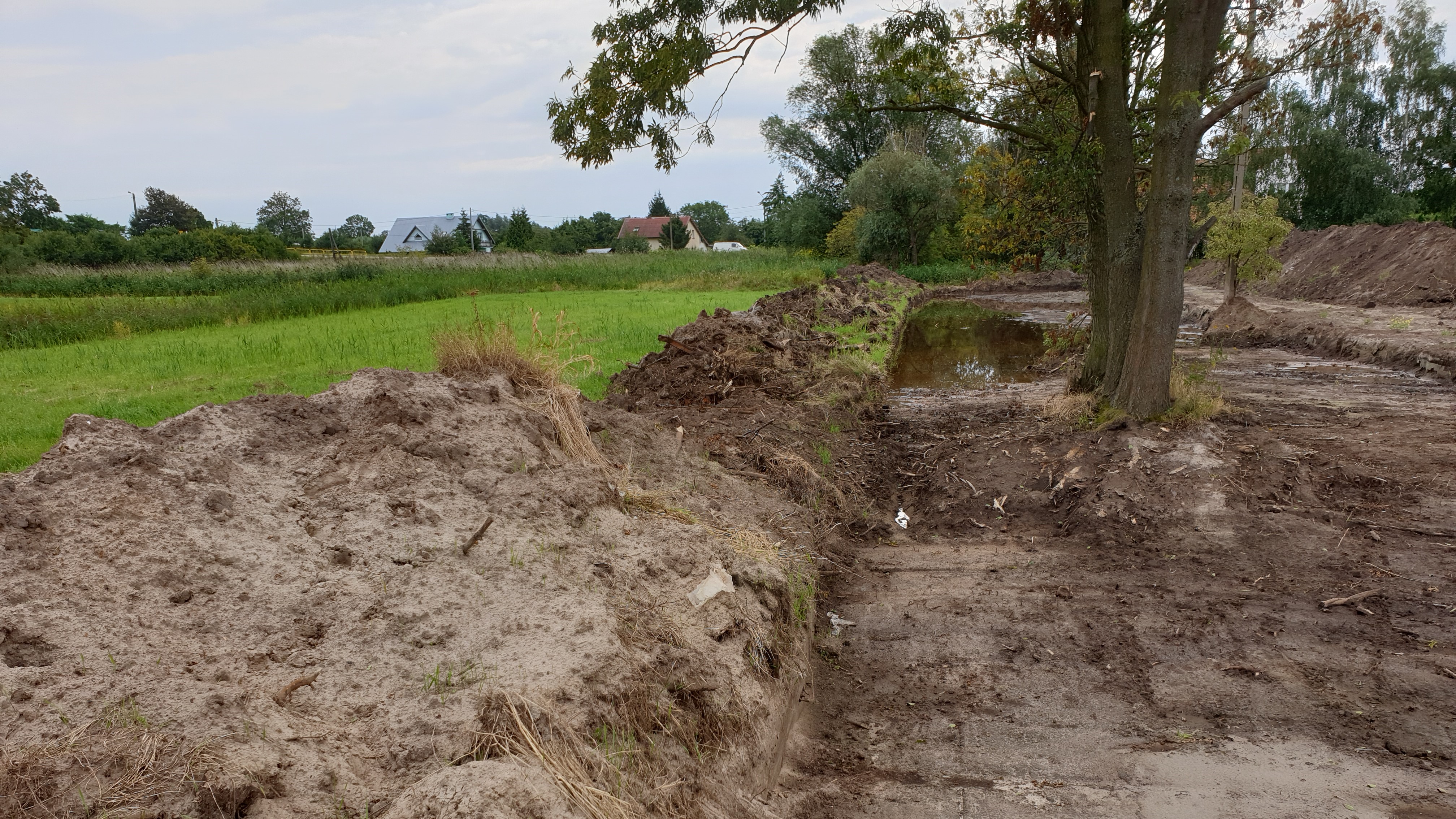
First, the topsoil in the field has to be removed. It's done in strips. Once the mining has been done, the topsoil must then be returned to its place and reclaimed.
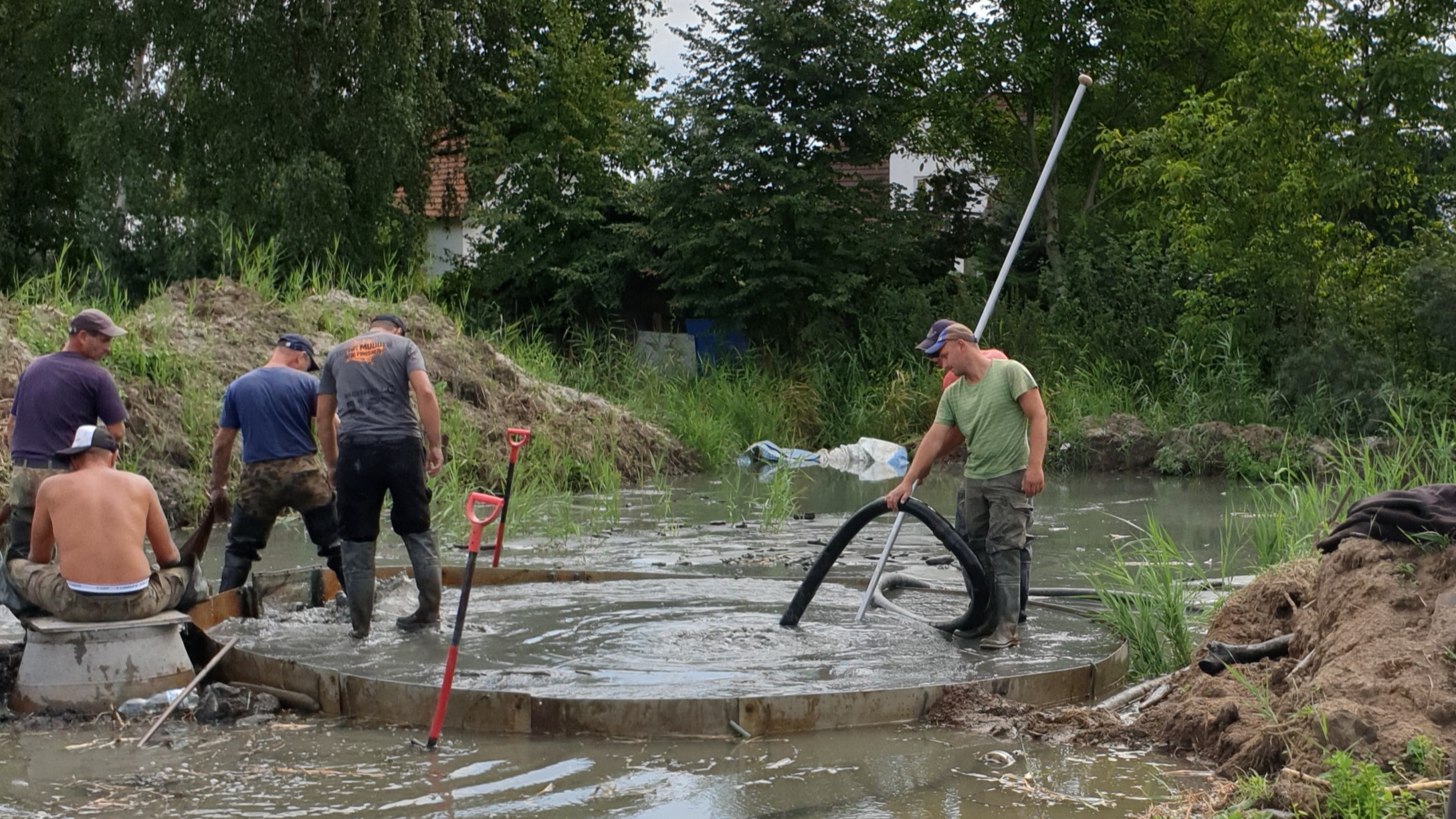
Where the topsoil has been raked, 'wells' of about 10 to 20 metres deep are then dug bit by bit. First, a metal hoop is placed on the ground. A hole is dug in the middle of the hoop with a steel rod about 20 metres long. At the same time, a strong stream of water is forced into the hole. The soil is sandy, so it works quite well. The flow of water loosens bits of wood, grass and stone from the deposits and they float to the surface.
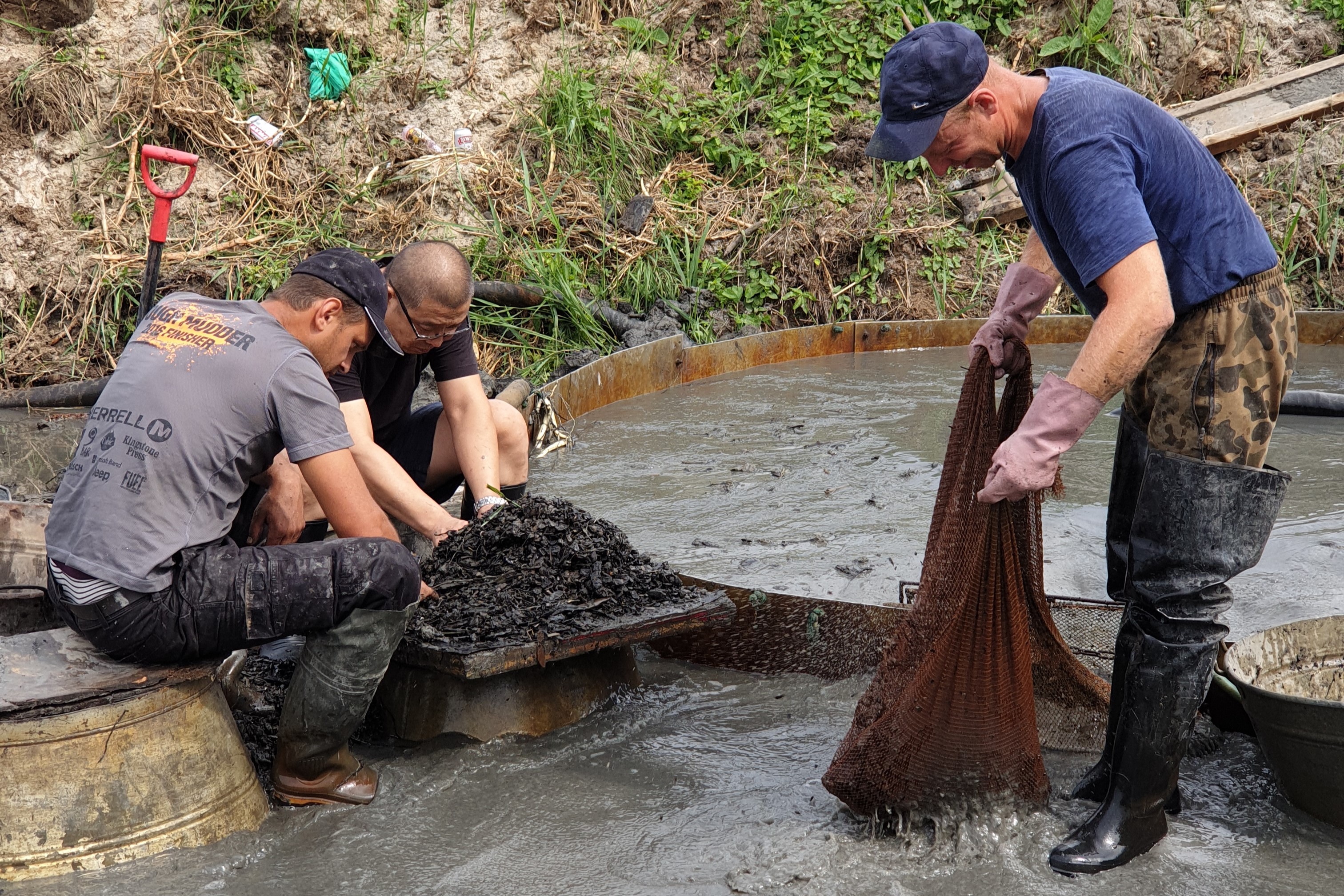
Everything is captured in a large net at the mouth of the hoop. From the net, the contents go into smaller nets where the initial sorting takes place.
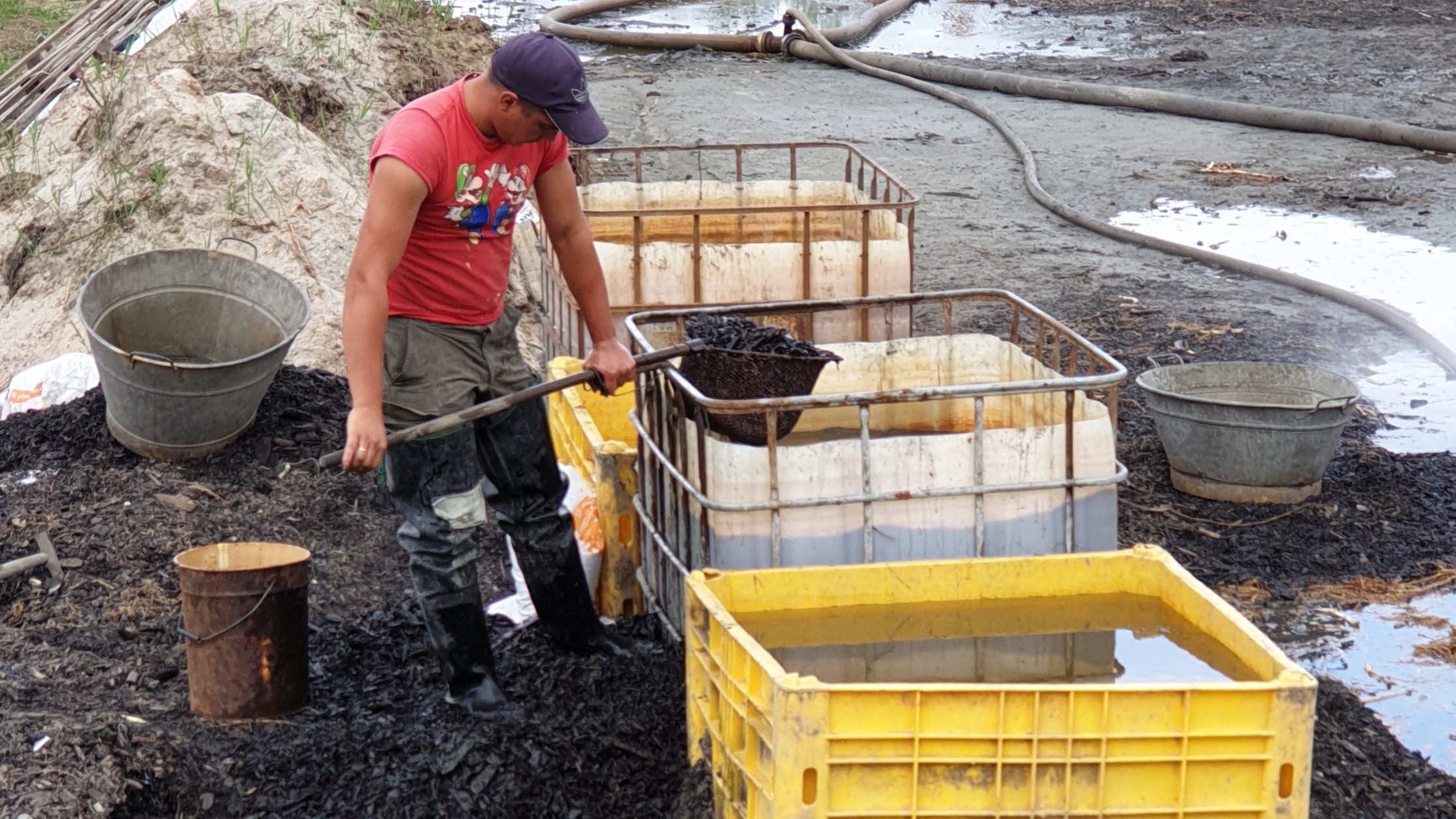
In the next step, the contents of the sieves are dumped into large tanks of salt water. The amber is light and floats to the surface in the saturated salt water. In contrast, grass, roots and stones sink to the bottom.
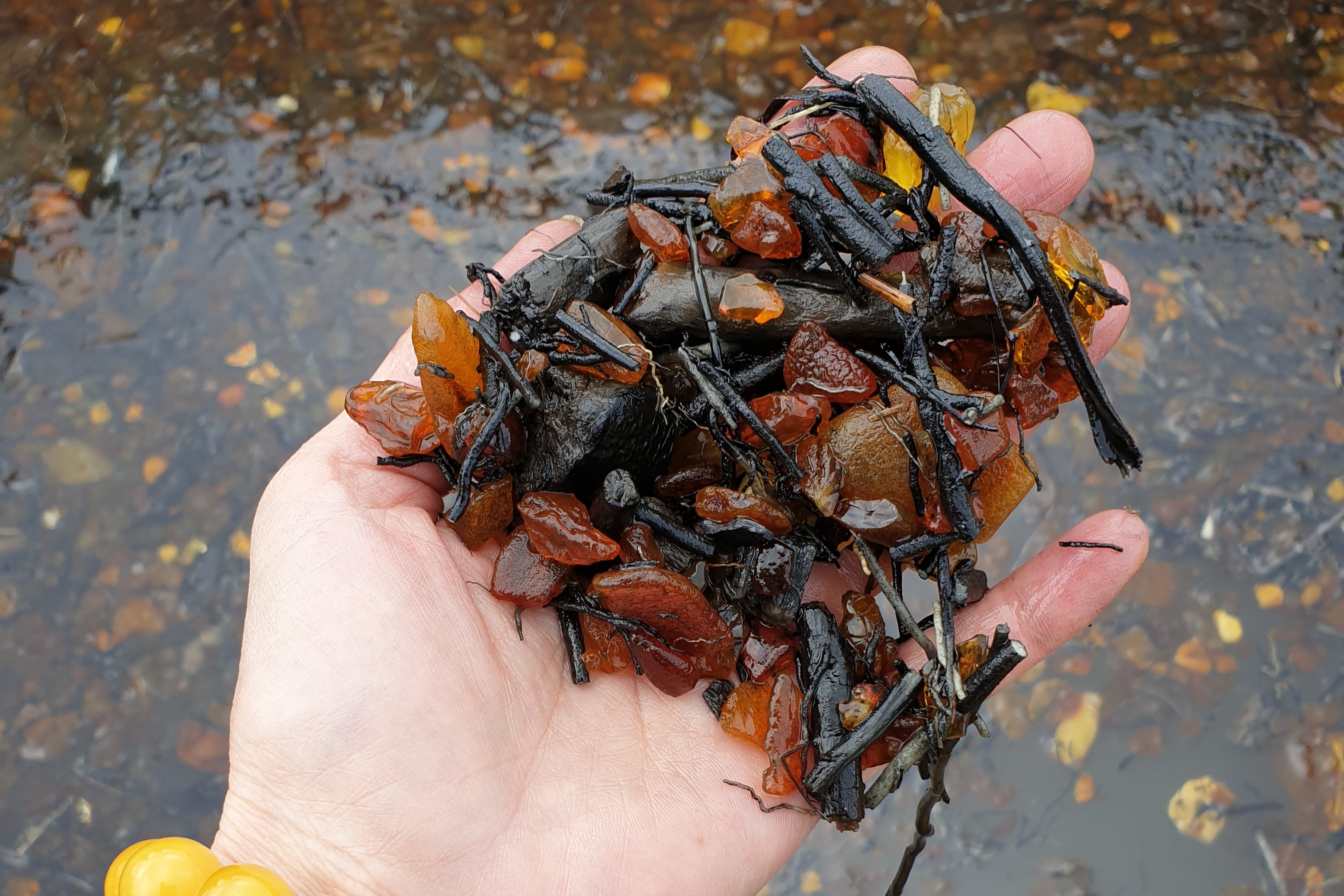
A further sorting and cleaning process follows. Here the miners use sieves. Amber stones are sorted according to size into several categories, from grains weighing 1-2 g to amber stones weighing over 100 g. Of course, the tiny stones are the most numerous. To give you an idea, out of 500 kg of raw amber there are only about 10 kg of stones weighing over 20 grams. And the larger ones, over 100 grams, even less than that.
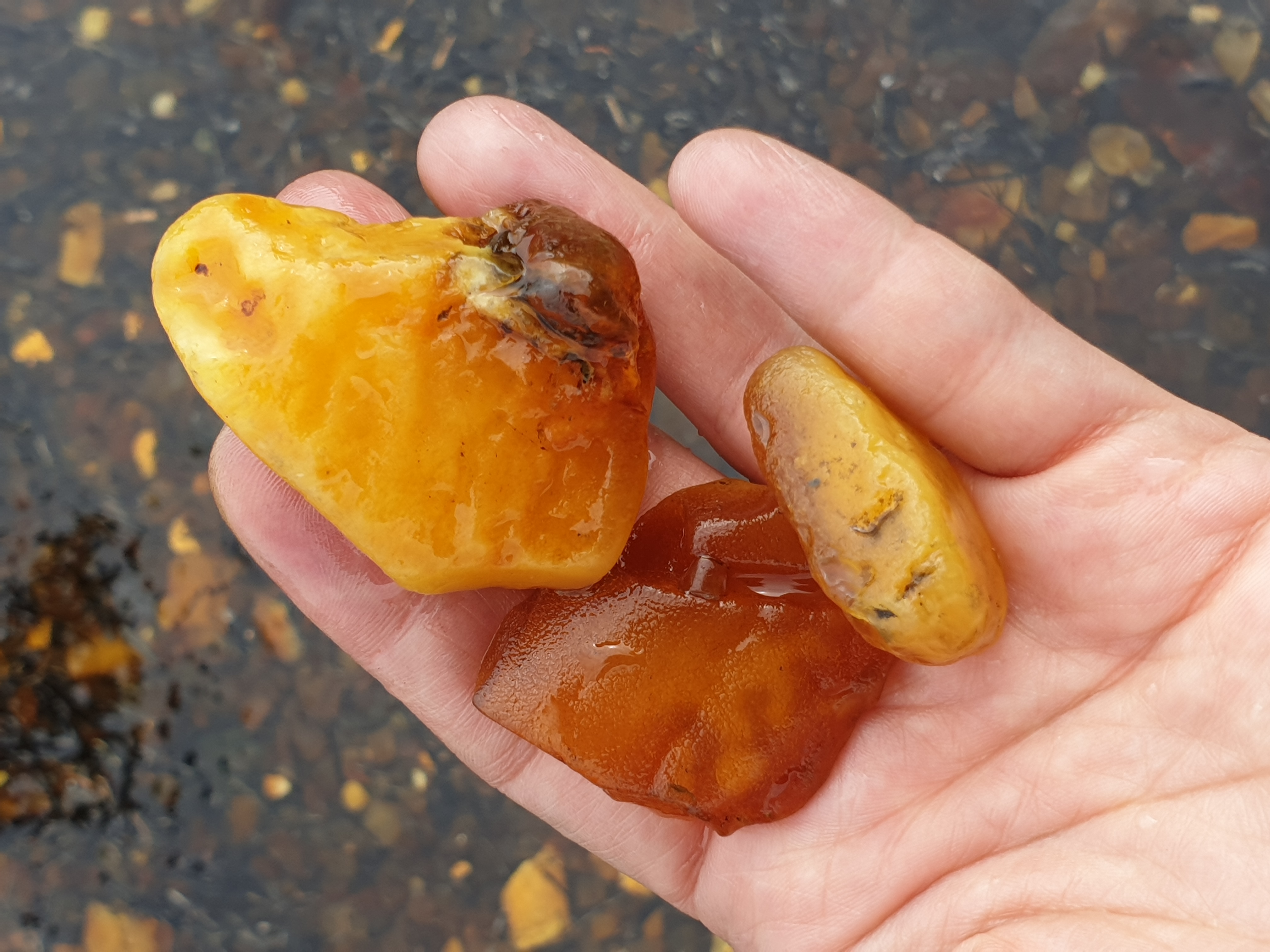

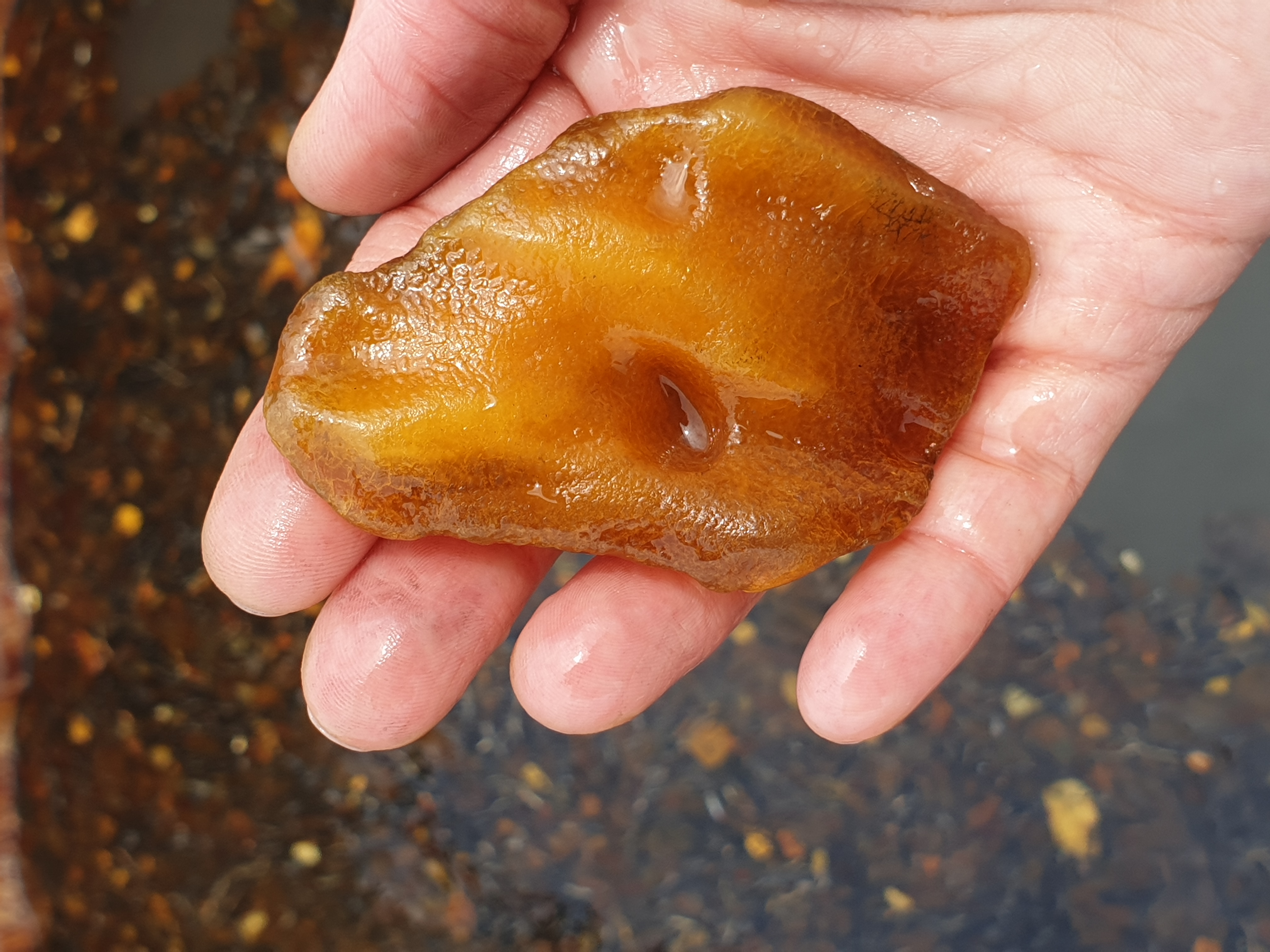
Amber mining is pretty tough. In the end, my husband and I agreed that we would rather craft raw amber and leave the mining to the experts.
